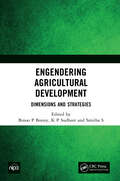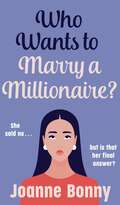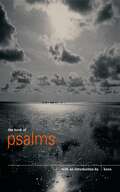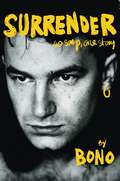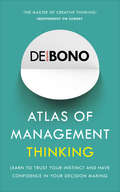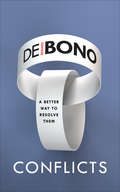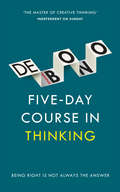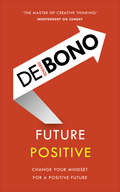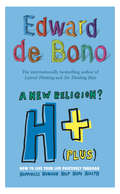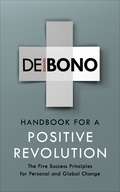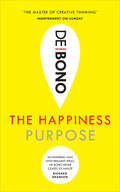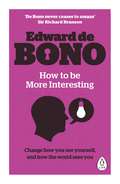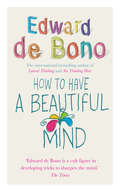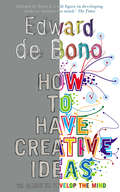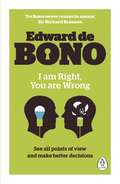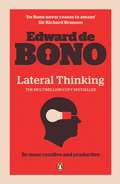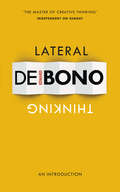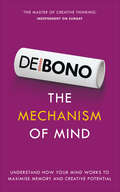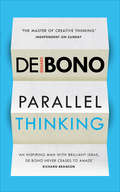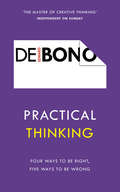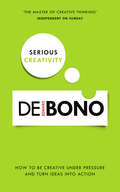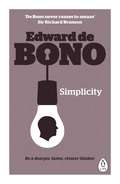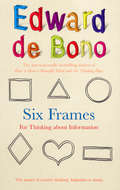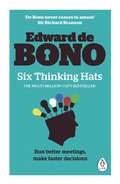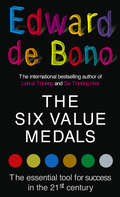- Table View
- List View
Engendering Agricultural Development: Dimensions and Strategies
by Binoo P. Bonny K. P. Sudheer S. SmithaThis book is an attempt to comprehend and compile the history, present status, and future trends of the gender roles in agriculture. The book comprises of three divisions viz., Gender in agriculture development (Part I), Gender in allied sectors of agriculture (Part II) and Data, Tools and approaches in gender analysis (Part III), that explicates the prevalent gendered relegations. It provides insights on the gender dimensions in Indian agriculture, including initiatives, policy reforms and mends the literature gap in gender roles in the sector. The gender roles and impacts from different cultural and geographical horizons of agricultural and allied sectors in the emerging contexts of globalization, urbanization, climate change and the Covid19 pandemic are discussed in the book. It will be helpful to academics, researchers, students, and social workers who strive towards a gender-neutral world. Print and electronic editions not for sale in South Asia (India, Sri Lanka, Nepal, Bangladesh, Pakistan, Afghanistan and Bhutan).
Who Wants to Marry a Millionaire?: a fun and feisty reality TV romcom
by Joanne BonnyJournalist Emma Fontana is in the middle of setting up a women's magazine called Revolution, when she discovers that her best friends have signed her up for the reality show Who Wants to Marry a Millionaire? For ten days, eligible bachelor Marco Bernardi will host twenty girls in his villa and then choose one of them to be his bride. At first, Emma is furious, and sets off for Como with the intention of discrediting the whole show. But it isn't long before she finds herself caught up in the ridiculous thrill of it all. And then there's Marco's older brother Leonardo, who is as charming as he is suspicious of Emma's real intentions. As her feelings towards the Bernardi brothers become more complicated with each passing day, Emma finds herself wondering: does she want to marry a millionaire?
The Book of Psalms (The Pocket Canons #15)
by BonoThrough the ages, the book of Psalms has been regarded as the most inspirational of all the Bible's books. It is not known how or when the collection of 150 lyrical poems came into existence, though many are ascribed to King David. The text is introduced by U2 singer Bono.
Surrender: Bono Autobiography: 40 Songs, One Story
by Bono'A brilliant, very funny, very revealing autobiography-through-music. Maybe the best book ever written about being a rockstar' CAITLIN MORAN_______________________________________________________________Bono - artist, activist and the lead singer of Irish rock band U2 - has written his autobiography: honest and irreverent, intimate and profound, Surrender is the story of the remarkable life he's lived, the challenges he's faced and the friends and family who have shaped and sustained him.'When I started to write this book I was hoping to draw in detail what I'd previously only sketched in songs. The people, places, and possibilities in my life. Surrender is a word freighted with meaning for me. Growing up in Ireland in the seventies with my fists up (musically speaking), it was not a natural concept. A word I only circled until I gathered my thoughts for the book. I am still grappling with this most humbling of commands. In the band, in my marriage, in my faith, in my life as an activist. Surrender is the story of one pilgrim's lack of progress ... With a fair amount of fun along the way.' - BonoAs one of the music world's most iconic artists and the cofounder of organizations ONE and (RED), Bono's career has been written about extensively. But in Surrender, Bono's autobiography, he picks up the pen, writing for the first time about his remarkable life and those he has shared it with. In his unique voice, Bono takes us from his early days growing up in Dublin, including the sudden loss of his mother when he was 14, to U2's unlikely journey to become one of the world's most influential rock bands, to his more than 20 years of activism dedicated to the fight against AIDS and extreme poverty. Writing with candour, self-reflection, and humour, Bono opens the aperture on his life - and the family, friends and faith that have sustained, challenged and shaped him.Surrender's subtitle, "40 Songs, One Story," is a nod to the book's 40 chapters, which are each named after a U2 song. Bono has also created 40 original drawings for Surrender which will appear throughout the book.
Atlas of Management Thinking (Pelican Ser.)
by Edward De BonoFirst published in 1981, this was the first book ever to be written explicitly for the right side of the reader’s brain. Much has been made of the research conducted into the left side of the brain – home to language and logic. The right side works in images, whole patterns and undefined feelings – none of which can be verbalized. This more elusive thinking often functions as what is loosely called ‘intuition’. In Atlas, de Bono shows us how to use the right side. It is an atlas because it is a visual reference of images and illustrations that point the reader in the right direction (literally). For anyone who has ever been told to trust their instinct, or who is concerned with management and decision-making, this book is a de Bono classic.
Conflicts: A Better Way to Resolve Them (Pelican Ser.)
by Edward De BonoThink, don't fight.In today’s world we use an out of date thinking system to navigate our way through modern society, especially when it comes to conflicts and disagreements.Conflicts argues that instead of our age old system of debate we should adopt what de Bono calls a ‘design idiom’ and use lateral thinking to navigate a feud. If two parties think their argument is best, we should be introducing a third party role. De Bono explains how this concept of triangular thinking and map making is the way forward. By highlighting how the current system holds us back and offering practical alternatives De Bono paves the way for a fundamental shift in conflict resolution.
Five-Day Course in Thinking
by Edward De BonoFirst published in 1967, this remarkable title from one of history’s greatest minds remains a must-read in the world of creative thinking. Based on the tenet that an error can lead to the right decision, de Bono guides the reader through a series of non-mathematical problems and puzzles, all designed to help us analyse our personal style of thinking, work out its strengths and weaknesses, and to consider the potential methods that we never use.There are three courses, each five days long and each created to focus on a different style of thinking, featuring: The Bottles ProblemThe Blocks ProblemThe L-GameThe End GameA true life-changer, this book will have you thinking in ways that you never thought were possible.
Future Positive (Pelican Ser.)
by Edward De Bono‘Of one thing in life we can be sure. The quality of our life in the future will depend on the quality of our thinking.’Why are we so prone to be negative? And how can we become more positive, both as individuals and as a society? The answer lies in the way we think. The key to positive thinking is developing new concepts, whether this means coming up with a brand new idea or just looking at an existing one in a new light. If we make a deliberate and positive effort to change our thinking we can secure a positive future, and we can harness the focused power of human thinking by releasing it from its pettiness. Edward the Bono is the Nobel Prize nominated father of creative thinking and the master of training the mind to think the right way. He wrote the multi-million copy bestseller Six Thinking Hats and many other revolutionary works on how to think. This classic work was first published in 1979, and since then our belief in the power of positive thinking has only become stronger.
H+ (Plus) A New Religion?: How To Live Your Life Positively Through Happiness, Humour, Help, Hope, Health
by Edward De BonoH+ (Plus) A New Religion? provides a framework for achievement through daily acts of help or contribution. Whether this is offering other people something to laugh at or helping an elderly person cross the road, through these altruistic acts comes a sense of achievement, and from achievement comes self-esteem and a belief in oneself.Edward de Bono's new groundbreaking book offers an entirely positive way of life: with the emphasis not on sins that are to be avoided, but on things that are to be done. 'H' stands for:- Happiness- Help- Hope- Health - and, most importantly, Humour.
Handbook for a Positive Revolution: The Five Success Principles for Personal and Global Change
by Edward De BonoAnyone can join the positive revolution. All you need is creativity. Historically, revolutions have been negative – defining, overthrowing or destroying an enemy, fuelled by a sense of mission and direction. After victory, however, this energy often races on, causing factionalism and strife among the victors. The positive revolution also has energy and direction, but its opponents are entrenched patterns in thought.Progress, maintains Edward de Bono – whether on a personal or global scale – depends on thinking and behaviour that are positive and constructive. The world today is undergoing dramatic, often violent changes, and human behaviour is frequently shaped by guilt and negativity. To lift this dark cloud and create positive revolution, we need to rely more on humour, a key element in changing perception.In this inspiring book, Edward de Bono demonstrates clearly and simply how we can learn to think and interact constructively, efficiently and with respect for core human values.
The Happiness Purpose
by Edward De BonoFirst published in 1977, in this extraordinarily prescient book Edward de Bono sets out his method for achieving the ultimate 21st century goal: work-life balance. Defined in terms of life-space and self-space, de Bono invites the reader to look at their life and measure the gap between these spaces – the smaller the gap, the greater our chances at happiness; but if the life-space is vastly bigger than the self-space, our coping ability is compromised and anxiety is likely. For anyone concerned with happiness and life-fulfilment this book is essential reading, and is perhaps more resonant with readers now than ever before.
How to be More Interesting
by Edward De BonoTHE classic work about changing yourself and how others see you from the world-renowned writer and philosopher Edward de BonoPeople spend vast amounts of money, time and energy to achieve and maintain beauty, and yet despite its undisputed importance few of us devote similar efforts to be interesting. It is often thought that intelligence, beauty and confidence make you more interesting. This is not true. Being interesting is actually a state of mind. In How to be More Interesting, lateral-thinking guru Edward de Bono reveals how playing with ideas, making connections, speculating and using the imagination are at the heart of being an interesting person. With seventy exercises that will help you bring humour, insight and surprise to everyday situations, this book will ensure that people not only find you fascinating company but also won't be able to forget you.
How To Have A Beautiful Mind
by Edward De BonoPeople spend a fortune on their bodies, their faces, their hair, their clothes. Cosmetics, plastic surgery, diets, gym membership - everyone's trying to be more attractive. But there's an easier way to become a beautiful person. It doesn't have to be physical. No matter how you look, if you have a mind that's fascinating, creative, exciting - if you're a good thinker - you can be beautiful.And being attractive doesn't necessarily come from being intelligent or highly-educated. It isn't about having a great personality. It's about using your imagination and expanding your creativity. And it's when talking with people that we make the greatest impact. A person may be physically beautiful, but when speaking to others a dull or ugly or uncreative mind will definitely turn them off.In clear, practical language, de Bono shows how by applying lateral and parallel thinking skills to your conversation you can improve your mind. By learning how to listen, make a point, and manoeuvre a discussion, you can become creative and more appealing - more beautiful.
How to Have Creative Ideas: 62 exercises to develop the mind
by Edward De BonoEverybody wants to be creative. Creativity makes life more fun, more interesting and more full of achievement, but too many people believe that creativity is something you are born with and cannot be learned.In How to Have Creative Ideas Edward de Bono - the leading authority on creative thinking - outlines 62 different games and exercises, built around random words chosen from a list, to help encourage creativity and lateral thinking. For example, if the task were to provide an idea for a new restaurant and the random word chosen was 'cloak', ideas generated might be: a highwayman theme; a Venetian theme with gondolas; masked waiters and waitresses. Or, if asked to make a connection between the two random words 'desk' and 'shorts', readers may come up with: both are functional; desks have 'knee holes' and shorts expose the knees; traditionally they were both male-associated items.All the exercises are simple, practical and fun, and can be done by anyone.
I Am Right, You Are Wrong: See All Points Of View And Make Better Decisions
by Edward De BonoI Am Right, You Are Wrong is THE classic work about choice in business and in life from world-renowned writer and philosopher Edward de Bono. Most of our everyday decision-making tends to be confrontational. Whether in large meetings, one-to-one or even in our own heads, opposite view points are pitted against each other. Ultimately, there must be a winner and a loser. In I Am Right,You Are Wrong, lateral-thinking guru Edward de Bono challenges this 'rock logic' of rigid categories and point-scoring arguments which is both destructive and exhausting. Instead he reveals how we can all be winners. Clearer perception is the key to constructive thinking and more open-minded creativity. In overturning conventional wisdom, Edward de Bono will help you to become a better thinker and decision maker. 'An inspiring man with brilliant ideas. De Bono never ceases to amaze with his clarity of thought' Sir Richard Branson
Lateral Thinking: A Textbook of Creativity (Pelican Ser.)
by Edward De BonoTHE classic work about improving creativity from world-renowned writer and philosopher Edward de Bono.In schools we are taught to meet problems head-on: what Edward de Bono calls 'vertical thinking'. This works well in simple situations - but we are at a loss when this approach fails. What then?Lateral thinking is all about freeing up your imagination. Through a series of special techniques, in groups or working alone, Edward de Bono shows how to stimulate the mind in new and exciting ways. Soon you will be looking at problems from a variety of angles and offering up solutions that are as ingenious as they are effective. You will become much more productive and a formidable thinker in your own right.'If more bankers and traders had read Lateral Thinking and applied the ideas of Edward de Bono to their own narrow definitions of risk, reward and human expectations, I suspect we would be in much better shape than we are'Sir Richard BransonEdward de Bono invented the concept of lateral thinking. A world-renowned writer and philosopher, he is the leading authority in the field of creative thinking and the direct teaching of thinking as a skill.Dr de Bono has written more than 60 books, in 40 languages, with people now teaching his methods worldwide. He has chaired a special summit of Nobel Prize laureates, and been hailed as one of the 250 people who have contributed most to mankind.Dr de Bono's titles include classic bestsellers such as Six Thinking Hats, Lateral Thinking, I Am Right You Are Wrong, Teach Yourself How To Think, Teach Your Child How To Think, and Simplicity - all now re-issued by Penguin.www.edwdebono.com
Lateral Thinking: An Introduction (Pelican Ser.)
by Edward De BonoWhy do some people always seem to have new ideas while others of equal intelligence never do? Lateral Thinking is Edward de Bono’s original portrayal of what lateral thinking is, how it works and how to use it to develop your own potential for thinking and problem solving.First published in 1967 as The Use of Lateral Thinking, this classic international bestseller remains as relevant to learning, problem solving and creative thinking today as when it was first published. De Bono argues that conventional vertical thinking often inhibits our ability to solve problems and come up with new ideas. He then shows that lateral thinking is a far easier and more natural way to generate simple, sound and effective ideas and offers guidance on how to develop your own ability to think laterally. Lateral thinking is a technique that anyone can learn and benefit from.
The Mechanism of Mind: Understand how your mind works to maximise memory and creative potential (Pelican Ser.)
by Edward De BonoThe Mechanism of Mind presents Edward de Bono’s original theories on how the brain functions, processes information and organises it. It explains why the brain, the ’mechanism’, can only work in certain ways and introduces the four basic types of thinking that have gone on to inform his life’s work, namely ‘natural thinking’, ‘logical thinking’,’ mathematical thinking’ and ‘lateral thinking’. De Bono also outlines his argument for introducing the word ‘PO’ as an alternative to the word ‘NO’ when putting lateral thinking into practice. Drawing on colourful visual imagery to help explain his theories and thought-processes, from light bulbs and sugar cubes to photography and water erosion, The Mechanism of Mind remains as fascinating and as insightful as it was when it was first published in 1969. This is a must-read for anyone who wants to gain a greater understanding of how the mind works and organises information – and how Edward de Bono came to develop his creative thinking tools.
Parallel Thinking
by Edward De BonoWestern thinking is failing because it was not designed to deal with changeIn this provocative masterpiece of creative thinking, Edward de Bono argues for a game-changing new way to think. For thousands of years we have followed the thinking system designed by the Greek philosophers Socrates, Plato and Aristotle, based on analysis and argument. But if we are to flourish in today’s rapidly changing world we need to free our minds of these ‘boxes’ and embrace a more flexible and nimble model.Parallel Thinking is an invaluable insight into the word of creativity; de Bono unveils unique methods of brainstorming and explains preconceived ideas of what creativity involves and is. This book is not about philosophy; it is about the practical (and parallel) thinking required to get things done in an ever-changing world.
Practical Thinking: Four Ways to be Right, Five Ways to be Wrong (Pelican Ser.)
by Edward De BonoIn Practical Thinking de Bono’s theme is everyday thinking, how the mind actually works – not how philosophers think it should. Based on the results of his famous Black Cylinder Experiment (a critical thinking task that asks participants why they think a black cylinder falls over), de Bono explores the four practical ways of being right. From there he picks out and names the five levels of understanding – and the five major mistakes in thinking. From memes and Instagram to twitter and bestselling books like Mistakes I Made At Work, mistakes – and what we can learn from them – are a hot topic. With Edward you’ll learn exactly why we all make them.
Serious Creativity: How to be creative under pressure and turn ideas into action
by Edward De BonoIf you want to be the best, focus on your most valuable asset: the power of your creative mindAs competition and the pace of change intensify, companies and individuals need to harness their creativity to stay ahead of the field. Under pressure, people often think they can't be creative; many more are convinced they are not creative at all because they have never been 'arty'. Creative genius Edward de Bono debunks these common notions in this remarkable book. He shows how creativity is a learnable skill - one that everyone can use to improve their performance. He then explains how you can unlock your own creativity to reap the personal and professional rewards it will bring. Learn how to:be creative on demand with de Bono's step-by-step approach add value to ideas and turn them into financial assets boost creativity with the power of lateral thinking break free from old ways of thinking with creative challenging
Simplicity
by Edward De BonoTHE classic work about making the complicated simple from world-renowned writer and philosopher Edward de BonoFrom confusing manuals to uninterpretable jargon and bureaucratic red-tape, modern life can be highly complicated and frustrating. For many of us it is almost impossible to make sense of. In Simplicity, lateral-thinking guru Edward de Bono shows us how to bring clarity into our increasingly complicated lives. Through his ten rules of simplicity, he encourages us to be creative and break down the complex into manageable and recognisable parts. By making the complicated simple, you will free up time, reduce stress and make better decisions.
Six Frames: For Thinking About Information
by Edward De BonoAttention is a key part of thinking clearly and productively, and yet we pay very little attention to attention itself. If you see someone lying injured in the middle of the road, for example, your attention would go to that person but, if a bright pink dog wandered past at the same time, your attention would automatically stray to the dog. That is precisely the weakness of attention - it is pulled to the unusual. How much attention do we pay to the usual?So, what can we do about it? Instead of waiting for attention to be pulled towards something unusual, we can set out frameworks for 'directing' our attention in a conscious manner. Just as we can decide to look north, west or even south-east, so we can set up a framework for directing our attention, and that's where Edward de Bono's 'six frames' come in. Each frame is a direction or method in/with which to look, based on a different shape - triangle, circle, heart, square, diamond, slab.Today we are literally surrounded by information and it has never been so easy to obtain. Yet, information itself is not enough; it's how we look at it that really counts. Using the 'six frames' technique is the key to extracting real value from the masses of facts and figures out there and, like all de Bono's techniques, it is simple, effective and will utterly change the way you interpret information.
Six Thinking Hats
by Edward De BonoTHE classic work about decision-making from the world-renowned writer and philosopher Edward de Bono Meetings are a crucial part of all our lives, but too often they go nowhere and waste valuable time. In Six Thinking Hats, Edward de Bono shows how meetings can be transformed to produce quick, decisive results every time. The Six Hats method is a devastatingly simple technique based on the brain's different modes of thinking. The intelligence, experience and information of everyone is harnessed to reach the right conclusions quickly. These principles fundamentally change the way you work and interact. They have been adopted by businesses and governments around the world to end conflict and confusion in favour of harmony and productivity.
The Six Value Medals: The Essential Tool For Success In The 21st Century
by Edward De BonoTraditional thinking habits of businesses need to be greatly improved. Analysis and judgement are no longer enough to make important corporate decisions; you can analyse the past but you have to design the future. Corporate decisions depend on values. Disputes and conflicts often arise because of a clash of those values; each party in the dispute wants to pursue its own values, often at the expense of the other party. It is therefore essential that companies, managers and employees have a full understanding of the values of everyone involved to design a way forward that benefits all parties. From the bestselling author of How to Have a Beautiful Mind and Six Thinking Hats, this groundbreaking business book provides a basis for value assessment, an essential tool in decision-making for 21st century corporations. De Bono demonstrates that values come into all areas of thinking, behaviour and decision-making and outlines a framework to focus employees' attention on a variety of values including human values, organisational values, cultural values and perceptual values. By introducing a scoring system to rate different values as strong, sound, weak or remote de Bono helps readers to prioritise and make executive decisions that count.
